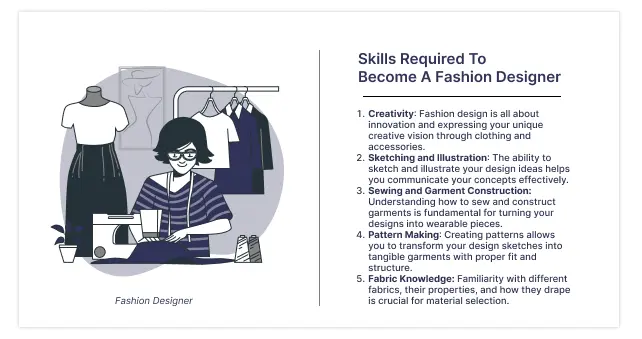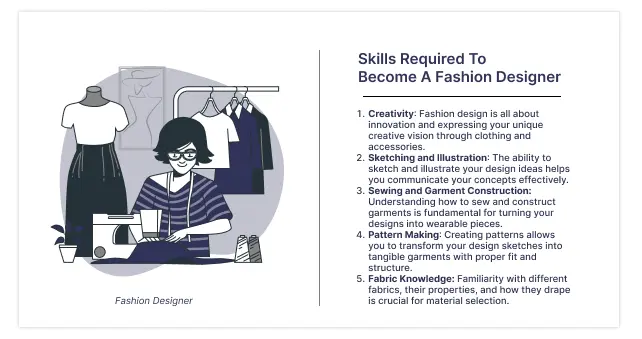
Published By Team Setmycareer on sep 25, 2023
provides valuable insights into the step-by-step journey of entering the competitive fashion industry. It offers guidance on education, skill development, and networking, making it essential for aspiring designers to navigate their path successfully and pursue their fashion dreams.

Fashion designers have a unique presence in our society. Their creativity and imagination influence how people look, as well as the culture and societal climate. They enjoy researching fashion patterns, sketching sketches, selecting fabrics, and being involved in all facets of their designs' creation. They help to produce millions, if not billions, of items of apparel and footwear that are bought by customers per year. Branding and advertisements are used by fashion designers to advertise themselves. Many fashion designers promote their wares across fashion magazines as well as their own retail shops.

Create a strong portfolio showcasing your design projects and sketches.
Look for internships or entry-level positions to gain industry experience and build your network.
Attend industry events and gatherings to network with professionals in the field.
Consider specializing in a specific area of fashion design, such as haute couture or sustainable fashion.
Explore advanced courses or a master's degree in fashion design for further refinement.

Are you feeling uncertain about your career path? Not sure which direction to take? Take the first step towards a fulfilling future
Once you procure the required qualifications for becoming a Fashion Designer, a myriad of options are open to you. There are multiple projects you can undertake throughout this line of work, and there are many other fields you can branch out to as well.
Fashion Designers can opt for various fields of work in the companies listed below:
Journey to become a fashion designer is an exciting and creative endeavor that demands a diverse skill set and unwavering passion. By acquiring the necessary skills, pursuing education, and gaining hands-on experience, aspiring designers can navigate the competitive world of fashion
We understand that making important career choices can be overwhelming and uncertain. The decisions you make today will shape your professional journey and have a lasting impact on your life. That's why we highly encourage individuals like you to talk to our experts before making any significant career decisions. Our team of experienced career counselors is here to provide you with the guidance and support you need to make informed choices that align with your aspirations and goals.
No. 14/595, 1st Floor, Nanjappa Reddy Layout, Koramangala 8th Block, Bangalore 560095